Part 3: Building A Balanced Gaming PC
What does it mean to build a truly-balanced PC? How great would it be to piece together a machine bottlenecked by neither CPU or GPU? We set forth to measure the perfect balance in seven different games and four resolutions in this third of many parts.
Processors
While a powerful GPU is certainly an important component in a balanced gaming PC, graphics performance alone does not guarantee an enjoyable experience. The processor, or CPU as we call it, amongst other factors, must cope with tasks like physics and AI (artificial intelligence) calculations, on top of any background tasks running as you game.
Parts One and Three: Intel Processors
Intel Core i5-750

Similar to the Core i7-920 below, Intel’s mainstream Core i5-750 is also a 45 nm quad-core processor, clocked at 2.66 GHz, with 4 x 256KB L2 cache, 8MB shared L3 cache, and Intel’s Turbo Boost technology. How this LGA 1156 Lynnfield-based processor mainly differs is through its 16 lanes of integrated PCIe connectivity and dual-channel memory support, as well as the omission of Hyper-Threading support (meaning we get four cores and four threads).
Intel Core i7-920
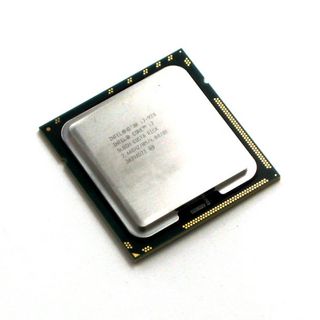
Serving up solid performance and plenty of overclocking potential, the quad-core Intel Core i7-920 is the fastest CPU we will emphasize in this series. After all, it has the headroom to exceed even Intel's flagship Core i7-975, and we address overclocked performance here in this part of the series.
This 45 nm, Bloomfield-based LGA 1366 processor is clocked at 2.66 GHz, sports 4 x 256KB L2 cache, an 8MB shared L3 cache, support for three memory channels, and it features Intel’s Hyper-Threading and Turbo Boost technologies.
Stay on the Cutting Edge
Join the experts who read Tom's Hardware for the inside track on enthusiast PC tech news — and have for over 25 years. We'll send breaking news and in-depth reviews of CPUs, GPUs, AI, maker hardware and more straight to your inbox.
Intel Core 2 Quad Q9550
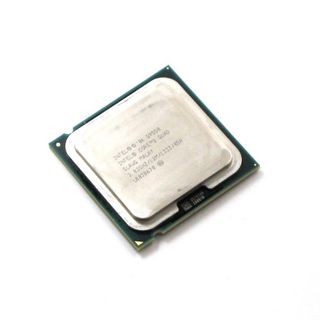
The Intel Core 2 Quad Q9550 provides a good look at what you can still get from the LGA 775 interface, ideal for the folks with slightly older P45/X38/X48 systems and not afraid to upgrade. This 45 nm quad-core Yorkfield-based chip is clocked at 2.83 GHz, has 12MB L2 cache between its two physical die, and runs on a 1,333 MT/s FSB.
Intel Core 2 Duo E8400

The Intel Core 2 Duo E8400 is a 45 nm, dual-core Wolfdale-based processor with 6MB of L2 cache, also running on a 1,333 MT/s FSB. This once-legendary LGA 775 processor is clocked at 3.0 GHz, but is probably best known for its 4.0+ GHz overclocking potential.
Intel Pentium E6300

Because there is so much variance in Intel's dual-core processor lineup, no single processor best represented what Intel had to offer. Thus, we were torn between adding a Pentium E5200, E5300, or E6300 to the mix.
All of these 45 nm Wolfdale-based chips have 2MB cache and offer big performance once overclocked. But the 2.8 GHz Pentium E6300 offers higher stock performance for an extra $15 or so. Unfortunately, its 1,066 MT/s FSB does mean a lower available multiplier when it comes time to overclock.
Parts Two and Four: AMD Processors:
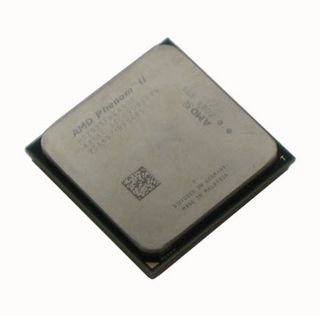
AMD Phenom II X4 955 Black Edition
The AMD Phenom II X4 955 Black Edition is a quad-core Socket AM3 processor with 4 x 512KB L2 cache, and a 6MB shared L3 cache. We could have used this Black Edition (BE) processor to simulate a Phenom II X4 965 BE. But we’ll be overclocking later anyway. Besides, its slightly lower 3.2 GHz stock clock rate and significantly lower price tag combine to enable a more attractive price/performance ratio in favor of AMD's Phenom II X4 955 BE.
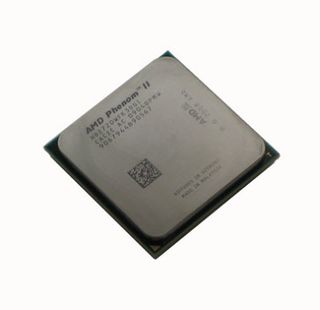
AMD Phenom II X3 720 Black Edition
We pay close attention to our comments section for each story that goes live, and we know that the AMD Phenom II X3 720 Black Edition was considered by some readers to be one of the best values in gaming processors.
This triple-core Socket AM3 CPU has 3 x 512KB L2 cache and a 6MB shared L3 cache. At 2.8 GHz, it’s the lowest-clocked Phenom II we’ll be testing in this series.
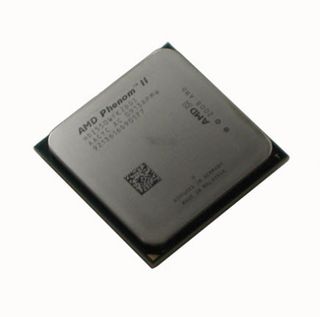
AMD Phenom II X2 550 Black Edition
The Phenom II X2 550 Black Edition is a 3.1 GHz, dual-core, Socket AM3 processor with 2 x 512KB L2 cache and a shared 6MB L3 cache. Of course, like all Phenom II Black Edition chips, the X2 550 has an unlocked multiplier and voltage ID.
Special thanks to Intel and AMD for arranging the CPUs needed to make this entire series possible.
-
liquidsnake718 I love how on the first page picture of all the games on this article show the games that truly take a toll on GPU's and CPU's. You are however missing Metro 2033 and Dirt 2 in DX11 which obliterates some GPUs in DX11!Reply -
IzzyCraft A metro 2033 graph wouldn't be interesting it would start at 0 and end at 5 for most set ups :DReply -
The choice of Corsair Dominator for the RAM is surprising, given that there are equally fast and stable choices at a much lower price point. OCZ, G Skill, Crucial, etc. I still love their power supplies though.Reply
-
duk3 ColMirageGlad to see the last part of the series. Very useful!Reply
They mentioned a part 4 in the article, with overclocking AMD processors. -
kaintfm The choice of Corsair Dominator for the RAM is surprising, given that there are equally fast and stable choices at a much lower price point. OCZ, G Skill, Crucial, etc. I still love their power supplies though.Reply -
agnickolov And where is the Core i3 530? This is the real gaming gem of a CPU, but I hardly see it in any reviews @ Tom's...Reply -
manitoublack Bought 2 GTX295's on release and run them on my i7-920, in SLi at 640MHz. Still over a year on and there still almost top dog.Reply
Great review Toms, and makes it easier to sleep at night knowing that 14months on little can touch what I've got regardless of the $1600AUD buyin. -
FUtomNOreg Very enlightening though, given my current rig's specs, thoroughly depressing. Curse you for breaking my delusion that my PC was adequate! I feel an overwhelming urge to upgrade coming on.....Reply
Most Popular

